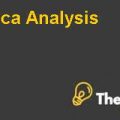
Introduction
IGM is a large publicly traded asset management company as it is a part of the larger Canadian financial conglomerate. IGM has two divisions that include Investors Group and Mackenzie Financial Corporation, each division contributes approximately 68% and 28% of earning respectively. Moreover, IGM is a second largest mutual fund asset manager along with the 15$ share in market. IGM has more than $1 billion under the management of the mutual fund assets. However, this amount of mutual fund includes around 90% of total AUM (level of Assets under Management)
Saxon is an investment management company that is involved in all segments of assets management that include mutual funds, institutional asset management and private clients. The total assets of Saxon under the management were around $13.4 billion from which most assets are institutional assets. Saxon distributed its mutual funds with the help of four distribution channels.
The company earns its revenue from the management fee that is charged to their mutual fund, institutional asset management and private clients segment. Saxon has strong reputation as a successful asset manager in the industry. Additionally, Saxon’s share price performance from August 2007 to Saxon is not satisfactory despite the significant increase in EPS and growth.
Furthermore, Saxon and IGM both companies functioned within the asset management industry of Canada. The Canadian industry consists of three important segment that include mutual fund, institutional asset management and private clients. The mutual fund assets in the industry increased to $696 billion in 2007 from the $3.6 billion in the year 1980. The asset management funds in the Canadian industry consist of three groups as well as the key earning driver in the industry was (AUM) level of assets under management.
Problem statement
The main problem that IGM is facing in deciding which valuation method would have the ability to generate most accurate value for Saxon for its proposed acquisition. In addition to this, IGM also wants to analyze the strategic rationale as well as the impact of this acquisition on IGM.
Case Analysis
Following are the topics that are covered in the report:
- Pros and cons of Saxon Acquisition
- Calculations weighted Average Cost of Capital(WACC )
- Valuation based on discounted cash flows (DCF)
- Value per share evaluation
- Valuation based on comparable analysis
- Valuation based on comparable precedent analysis
- Valuation based on various prices premiums
- Valuation based on accretion/dilution
- Recommendations
Pros and cons of Saxon Acquisition
Since the stock performance of IGM was under pressure from the start of Aug 2007 to Aug 2008 the management of IGM decided to expand the presence of the company in the institutional segment to get the benefit of economies of scale. In addition to this, IGM also wants to expand its existence in the HNWI segment (Private clients) in order to gain the expected above average growth rates of AUM within Private clients segment. However, in order to achieve these objectives IGM decided to go for the acquisition of Saxon Financial. The most important advantage of the Acquisition of Saxon Financial was that it would allow the company to maximize the shareholder price as well as this acquisition would allow IGM to overcome the existing problems within the company.
Although the acquisition of the Saxon Financial would support IGM to overcome the absences in the institutional and private clients segment but on the other hand, there would also be a disadvantage with the acquisition of the Saxon Financial for IGM. This acquisition has less chances of success as the bid of acquisition below $21.20 due to which most of the shareholders were face difficulty in order to accept this offer.
Due to the small size of Saxon Financial and low ranking as Saxon was not in the top 25 companies of any asset class, it would also be difficult for the shareholders to easily accept the acquisition. Another advantage of this acquisition for IGM was that it would allow them to increase their market position as well as enhance the decreasing performance of the stock. While on the other hand, financial performance and dropping share price of Saxon Financial indicated the poor performance of the company that may lead this acquisition unsuccessful.........................................
This is just a sample partial case solution. Please place the order on the website to order your own originally done case solution.













